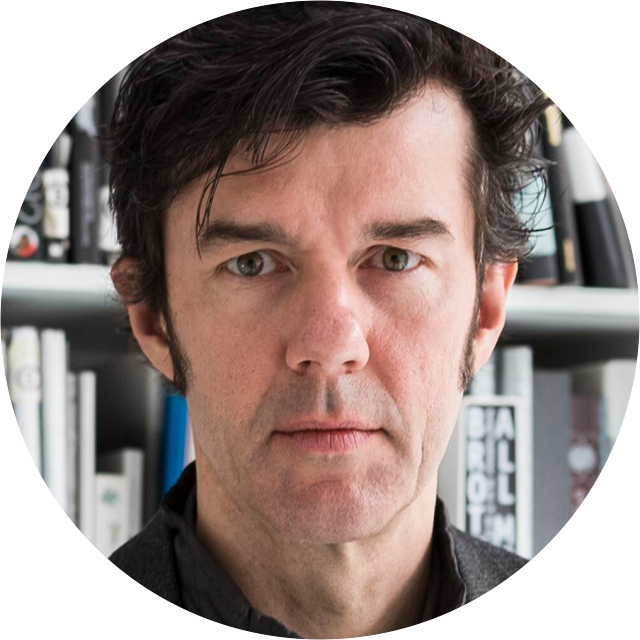Stefan Sagmeister: A view on portfolios
As we conclude the first five rounds of talking broadly about the beginning of an internship, we would like to dig a little deeper into preparing yourself for an internship. The challenges of presenting yourself through a portfolio, a presentation or even a phone call can be overwhelming, so we are very happy to listen to somebody who has probably seen more than a couple of thousand portfolios: Stefan Sagmeister.
You started your studio in 1993 and ran it as a small studio ever since. When did you actually work with your first intern and what were the motivations for getting your first intern?
We started in October 1993, myself and Veronica Oh, our first designer. The first intern started about a year later, and it was someone I knew who had contacted us to conduct an internship. At that point, the reason included having an extra pair of hands, as well as a suspicion, that the intern might learn more in three months than they would if they took a class from me at an art school. This turned out to be true.
You’ve been holding salon nights for more than ten years, where designers can show you their portfolio and get feedback from you. So we can easily say, that you’ve seen quite some portfolios. Which ones do you remember most, and why?
As always, good ideas well executed will win out. I am looking very much for evidence of sophisticated formal capabilities, in short, the ability to make things look good in a contemporary sense.
First salon nights, now feedback on your wonderful Instagram account, do you enjoy giving advice or critique?
I am fine with doing it, but I can’t say that it is among my favorite activities. There seems to be a big desire/need/want for constructive critique out there, so I am trying to be of service.
Besides evaluating the work itself, do you search for rhythm, or is there a particular structure that makes a portfolio work?
The simple rule would be: Show the best work first, 2nd best last, everything else in between. Show rather fewer good pieces than more and mediocre ones.
What has changed over time, when it comes to young designers’ capabilities, ideas, and designs? What has improved, what has gotten worse?
Designers can stand quicker on their own feet as it is possible to make a name for oneself on social media faster than back in the days. The possibility to freelance directly with clients on an international level is new too. The quality of ideas improved as well as the execution capabilities, the latter one mostly because it has gotten easier. I suspect that the overall craft level has decreased over the past 30 years, but I am not 100% sure as it is such a sweeping statement.
Do you see the digitalization and globalization as something that has mostly positive sides?
I am a big believer: Humanity goes down bad directions here and there, but overall the world (including the design world) has a remarkable ability to recognize these bad directions, correct them and get better.
One of your focus points has been the art world for several years now, what could people learn to improve their portfolio from outside their design bubble?
Every single designer I respect has a big interest outside the design world. It is not healthy to get one’s influences from within the design world. It’s much more interesting when they come from elsewhere.
You give talks all over the world, which in some parts are portfolio presentations. How do you orchestrate your presentations and portfolio, what do you look for when creating your own and the studio’s portfolio?
I design my talks to have a beginning, a middle and an end. I change (and try to improve them) after every time I hold them. Portfolios should be the same.
What specific rules would you formulate, to help aspiring young designers improve their portfolio and work?
Take form seriously. Work on it, improve it, push, push, push.
What has your personal experience in the studio been with interns? Any stories that give insight or a broader view on the topic?
We’ve seen the entire wide range, truly fantastically talented people that went on to become wonderful designers (Martin Woodtli, Jan Wilker, Ariane Spanier, and many others) and the opposite, where I felt the person did not learn anything and we could not use their work in real life.

Stefan Sagmeister is a designer and art director from Austria who currently lives and works in New York City. Together with Jessica Walsh, they run the New York City-based firm Sagmeister & Walsh (fka Sagmeister inc.). He has worked for the Rolling Stones, The Talking Heads, Lou Reed, and The Guggenheim Museum, among many others. Exhibitions on his work have been mounted in New York, Philadelphia, Tokyo, Osaka, Seoul, Paris, Lausanne, Zurich, Vienna, Prague, Cologne, and Berlin. He co-directed the documentary “The Happy Film” which premiered in 2017 at Tribeca Film Festival. Recently he opened a new exhibition about beauty together with Jessica Walsh and the studio’s team.